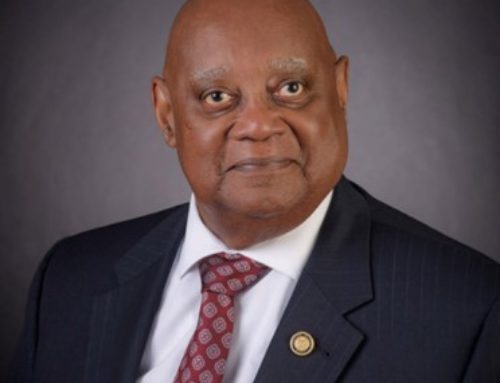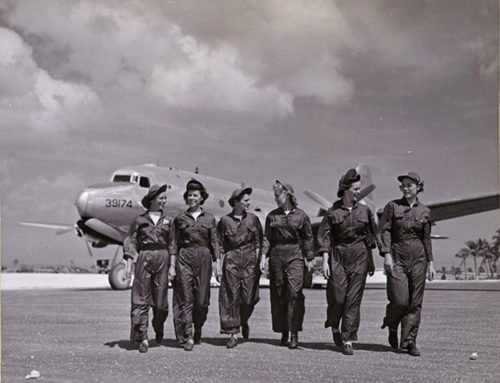Richard Hetherington O’Kane was born in Dover, New Hampshire, on 2 February 1911. He graduated from the Naval Academy in 1934 and spent his first four years in the navy on surface vessels. In 1938 he went to submarine school and then served several years aboard USS ARGONAUT (SS-166). Then, in 1942, he joined the precommissioning crew of what was to be one of the most celebrated boats of World War II: USS WAHOO (SS-238). He remained with her for five war patrols, three of which were conducted under the command of the famous Dudley “Mush” Morton, a submarine legend. O’Kane left WAHOO in July of 1943 to become Prospective Commanding Officer of USS TANG (SS-306), which was under construction. Just a few months later, in October of 1943, Morton and the entire WAHOO crew were lost with their boat. The entire submarine force was devastated; one can only imagine that O’Kane felt the loss especially acutely.
But he would go on to a storied career that would have made Morton proud. “It’s a big ocean,” O’Kane once told a reporter. “You don’t have to find the enemy if you don’t want to.” O’Kane wanted to. He searched for targets on the surface during daylight hours, posting extra lookouts to lessen the danger. He drilled the men whose job it was to peer through the periscope in ship recognition and range calculation; he even modified a musician’s metronome to transform it into a tool to assess target ships’ speed. His persistence and innovation paid off: TANG sent five Japanese vessels to the bottom on her very first patrol. On the second she proved a success at lifeguard duty, rescuing twenty-two airmen whose planes had gone down in the Pacific. On her next patrol she set a record for number of ships sunk in a single patrol—10, for a total of 40,000 tons. The previous record holder had been WAHOO.
O’Kane’s fifth patrol aboard TANG was both his best and his worst. It was during this patrol that he performed the actions which won him the Medal of Honor. His citation describes what happened:
“For conspicuous gallantry and intrepidity at the risk of his life above and beyond the call of duty as commanding officer of the U.S.S. Tang operating against 2 enemy Japanese convoys on 23 October and 24 October 1944, during her fifth and last war patrol. Boldly maneuvering on the surface into the midst of a heavily escorted convoy, CMDR O’Kane stood in the fusillade of bullets and shells from all directions to launch smashing hits on 3 tankers, coolly swung his ship to fire at a freighter and, in a split-second decision, shot out of the path of an onrushing transport, missing it by inches. Boxed in by blazing tankers, a freighter, transport, and several destroyers, he blasted 2 of the targets with his remaining torpedoes and, with pyrotechnics bursting on all sides, cleared the area. Twenty-four hours later, he again made contact with a heavily escorted convoy steaming to support the Leyte campaign with reinforcements and supplies and with crated planes piled high on each unit. In defiance of the enemy’s relentless fire, he closed the concentration of ship and in quick succession sent 2 torpedoes each into the first and second transports and an adjacent tanker, finding his mark with each torpedo in a series of violent explosions at less than 1,000-yard range. With ships bearing down from all sides, he charged the enemy at high speed, exploding the tanker in a burst of flame, smashing the transport dead in the water, and blasting the destroyer with a mighty roar which rocked the Tang from stem to stern. Expending his last 2 torpedoes into the remnants of a once powerful convoy before his own ship went down, Comdr. O’Kane, aided by his gallant command, achieved an illustrious record of heroism in combat, enhancing the finest traditions of the U.S. Naval Service.”
Early the following morning, TANG ran across another large convoy and started picking off ships. At 0230 she launched her twenty-fourth and final torpedo—and her luck ran out. The torpedo broached, circled around, and headed back for the boat. O’Kane and his men fishtailed the sub, trying to get out of the way, but 20 seconds after it had left TANG the torpedo returned, exploding near the aft torpedo room. The nine men on the bridge at the time, including O’Kane, were washed into the ocean; TANG went down by the stern and smashed into the bottom 180 feet below. The crew burned important papers and waited out a depth charging before attempting to escape; thirteen men left the boat, but only nine reached the surface. By the following morning, there were only nine survivors left including O’Kane. “I swam until I couldn’t swim any more,” he recalled later. “Then I thought of Ernestine [his wife] and swam some more.” In all, 78 men were lost that night.
The men were picked up the next morning by a Japanese vessel that had also picked up the survivors of one of the ships TANG had sunk; the submariners were beaten. “When we realized that our clubbing and kickings were being administered by the burned, mutilated survivors of our handiwork,” O’Kane said, “we found we could take it with less prejudice.”
O’Kane survived the Japanese POW camps and then continued his naval career, serving at commands both at sea and on shore. He received the rank of Rear Admiral upon his retirement in 1957. He passed away in 1994 and was buried in Arlington National Cemetery. Ernestine, thoughts of whom got O’Kane through eight hours in the water after TANG’s loss, is buried beside him.

Aboard USS REEVES (DLG-24), O’Kane, despite being desperately ill, stands with USMC ace Major Greg “Pappy” Boyington and the CO of the ship. The field jacket hides his emaciated frame–his weight at liberation was under 100 pounds. O’Kane was transferred immediately to the hospital ship BENEVOLENCE where a medical assessment rated his odds of survival at 50-50. He slowly recovered from a life threatening fever, malnutrition, dysentery, and jaundice.




